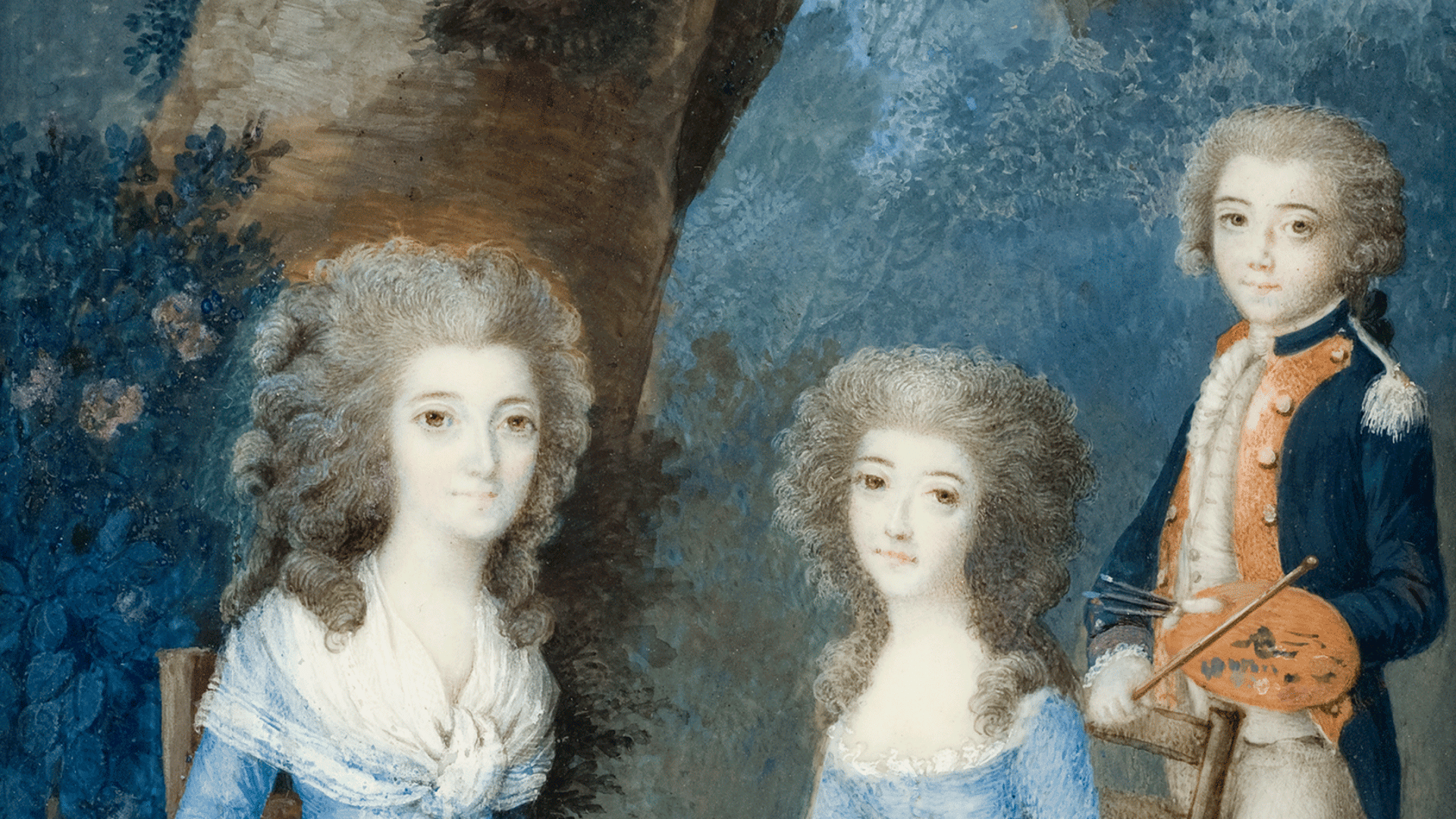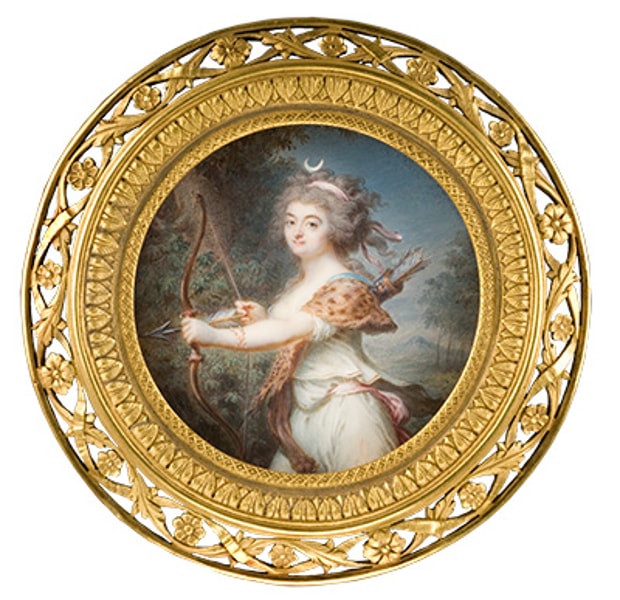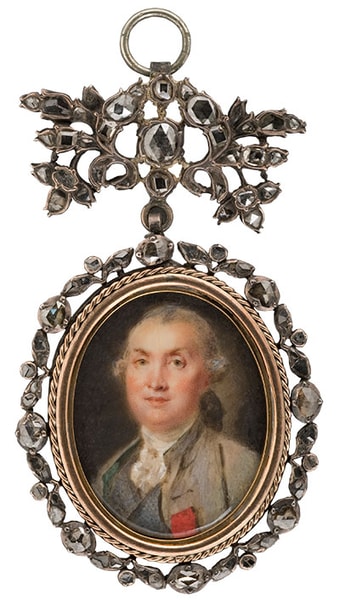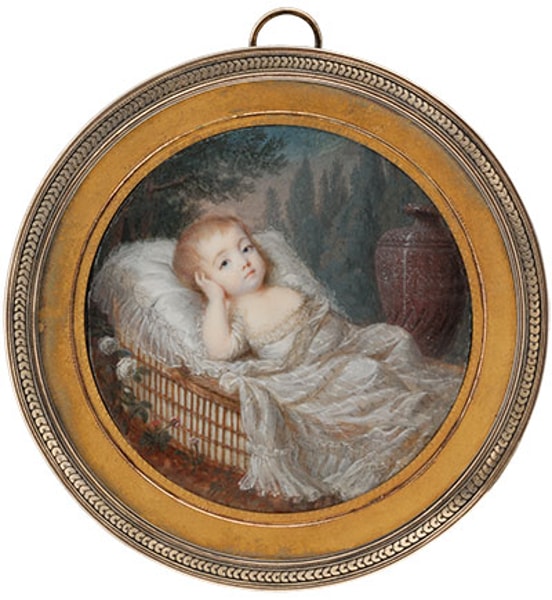
Time of Marie Antoinette
Miniatures from the Time of Marie Antoinette
The final years of the ancien régime were some of the most glorious in the art of miniature portraits, in terms both of their style and of the painting techniques used. The artists who created these portraits intended for personal use stand out due not only to their mastery of watercolour painting on ivory but also to their inventiveness in presenting inclination and love.
The Time of Marie Antoinette – a Key Period in the History of Miniature Painting
The epoch of Marie Antoinette is one of the most significant in the history of miniature painting, in regard to both style and the techniques used to create the images. More and more people wanted to own a likeness of a person close to them that was of a conveniently portable size. The huge demand led to many artists specialising in miniature painting, as it offered a lucrative means of making a living. They emphasised their artistic individuality by frequently signing their works – in contrast to common practice during the reign of Louis XV. This markedly increased the number of miniatures whose creators we know today.

Augustin Dubourg and Jean-Baptise Jacques Augustin: Lady as Diana, inv. no.: 10216 read more...
Paint Technical perfection
The greatest advance in painting technique in France was the introduction of thin sheets of ivory as the support. This material (from elephants’ tusks) had already been used in other countries since the early 18th century, but in France vellum was in use until the breakthrough came with the genius of Peter Adolf Hall. He settled in Paris in 1766 and as a result translucent, completely smooth ivory also became a common material used for miniature painting in France (cf. inv. no. 10324). The sheets were ground down to a thickness of only about half a millimetre and backed with white paper or silver foil to make the surface for painting appear as light and glowing as possible. The effect of the support in painting led to more options for the artist to add his own expressive variations; the paint could be opaque or transparent, applied finely or with broad brushstrokes, and given a richer texture using a scraper.

Peter Adolf Hall: Gentleman in Grey Coat, inv. no.: 10311 read more...
Emotions!
Comparing portraits from the reign of Louis XVI with those from the preceding period, one notices their sentimentality and the powerful characterisation of the sitter. Emotions are clearly expressed. Love in its most varied forms becomes a real pastime, and it therefore comes as no surprise that there are many miniatures dealing with this subject. A young beauty looks dreamily away, lost in thoughts of her dearest (inv. no. 10161, read more...), while elsewhere another invites the observer to follow the artist’s pointing finger and decipher a secret amorous message (inv. no. 10742, read more....), and yet others display their charms unashamedly (inv. no. 10206, read more...).
Die großen Meister der europäischen Miniaturmalerei
Frankreich war im ausgehenden Ancien Régime die tonangebende Nation in Kunstfragen; man trifft in der Sammlung Tansey auf alle führenden Meister des Fachs: Augustin, Dumont, Périn, Pasquier, Rouvier, Lemoine, Mosnier, Sauvage, Le Tellier, Sicardi und Vestier, um nur einige zu nennen. Unter den ausländischen Künstlern, die in Paris zu Ruhm gelangten und deshalb oft der französischen Schule zugeordnet werden, müssen der gebürtige Italiener Campana, der Schwede Hall sowie die Schweizer Sené und Thouron genannt werden. Das Ehepaar Tansey sammelte aber nicht allein „klingende Namen“, sondern interessierte sich schon immer auch für die Werke seltener Künstler oder für Stücke unbekannter Meister, die allein durch ihre Qualität beeindrucken. Der Interessierte wird es deshalb besonders schätzen, hier Werke eines Vassal, Bazin oder Le Gay zu finden, Miniaturen von Carteaux, Bréa und Lusse betrachten zu können und auch Stücke der wenig bekannten, aber sehr begabten Maler Hallé, Pujos, Bôbe und Tassy anzutreffen.

Leading Artists and Less Well-Known Painters read more...
During the final years of the ancien régime, France set the tone in matters to do with art; consequently, the great majority of works in the Tansey collection were painted by French artists. All the leading masters are here: Augustin, Dumont, Périn-Salbreux, Pasquier, Rouvier, Lemoine, Mosnier, Sauvage, Le Tellier, Sicardi and Vestier, to name but a few. The foreign artists who achieved fame in Paris and are therefore often regarded as belonging to the French school included Campana – an Italian, Hall – a Swede, and Sené and Thouron from Switzerland. However, the Tanseys not only collected famous names; they were also interested in the works of less common artists and pieces by unknown masters, which impress solely through their quality. The interested observer will therefore delight in finding here works by Vassal, Bazin and Le Gay, and seeing miniatures by Carteaux, Bréa and Lusse, along with items by the less well-known, but very gifted painters Hallé, Pujos, Bôbe and Tassy.
Alongside the excellent presence of the French school, masters from other countries complete the panorama. Smart, Hone, Daniel, Edridge, Bogle, Hill and Vaslet represent English miniature painting; Fabre, Soiron, Thouron, Terroux, Arlaud and Hurter represent that of Switzerland. Among the Scandinavian masters we find not only Hall, but also Høyer from Denmark and Lafrensen from Sweden.